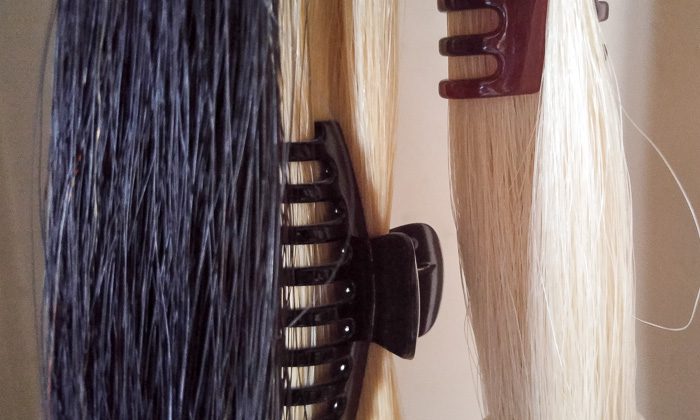How often should I get my bow rehaired?
This is one of the most commonly asked questions that I encounter from my students, other professionals, and from my clients. As we practice and perform on a nearly daily basis, we do not notice the degradation of the hair every time we pick up the bow, but with every use, the hair will stretch, and will lose some of its ability to properly grip the string, resulting in a diminished quality of sound for the performer. As well, hair that has been on a bow too long will become soiled with old rosin, dirt, and oils from the fingers of the performer. Once this has occurred, the individual strands of hair will become horizontally connected to each other, and no longer vibrate in the optimum fashion for the best tone production. For optimum tone quality to occur on a bowed string instrument, the hair that is contacting the strings needs to be absolutely clean of any dirt and oils, and have just enough rosin to make to string speak. The more foreign substances that are on the hair, the more hair, or string “noise” that can be heard. This is also described as the “crackling” sound that is heard, especially when holding long sustained pitches.
As the bow hair ages and degrades in quality, one of the most common occurrences (and signs that it is time to get a rehair), is that a lot of the hair on your bow starts breaking. While I only source my hair from the best possible distributor, who grades their hair partially on a proprietary method (and the only to do so in the industry) by its ability to maintain its strength through multiple stretching sessions, all bow hair will eventually break from over use. Breaking a few hairs from the bow is not a big deal, and the bow will not be negatively affected, but once there have been more than 10% of the hair broken, there will be a negative effect on both the physical aspect of the bow, and also on the sound that is produced. As most stringed instrument performers tend to tip the bow at an angle to the string (not maintaining flat bow hair to the string), the band of hair tends to wear unevenly, and will break more on one side than the other. When this is permitted to continue for too long, the hair will not tension properly on the bow, pulling more on one side than the other, and cause the bow the warp. While this can be fixed, it is best to never permit the situation to occur from the beginning.
Another result of playing on hair that is old, and stretched, is that the performer is working harder than they need for performance, which can result in extra tension in the bow hand, and may also cause injury to the performer from the unnecessary tension. There are many instances where I have had clients tell me after a rehair, “I had no idea that I was working so hard!” For optimum performance to occur, we can never work more than is absolutely necessary.
I have some clients that are very hard on their bows, and because of this they will have their bows rehaired several times a year. While for some, this regularity might seem unnecessary, once they have gotten into the habit of getting their bow rehaired on a regular basis, it is a practice that they are very happy to maintain. For most professionals, they should get their bow rehaired at least every 3 to 6 months, and no more than a year. Most students should be able to get by, with once a year, but the serious student will be served well with every 6 months. For both the professional, and the student, it is imperative that they get their bow rehaired before any audition. As one of my old teachers said, “You wouldn’t go into a car race with old tires!”

